Figures
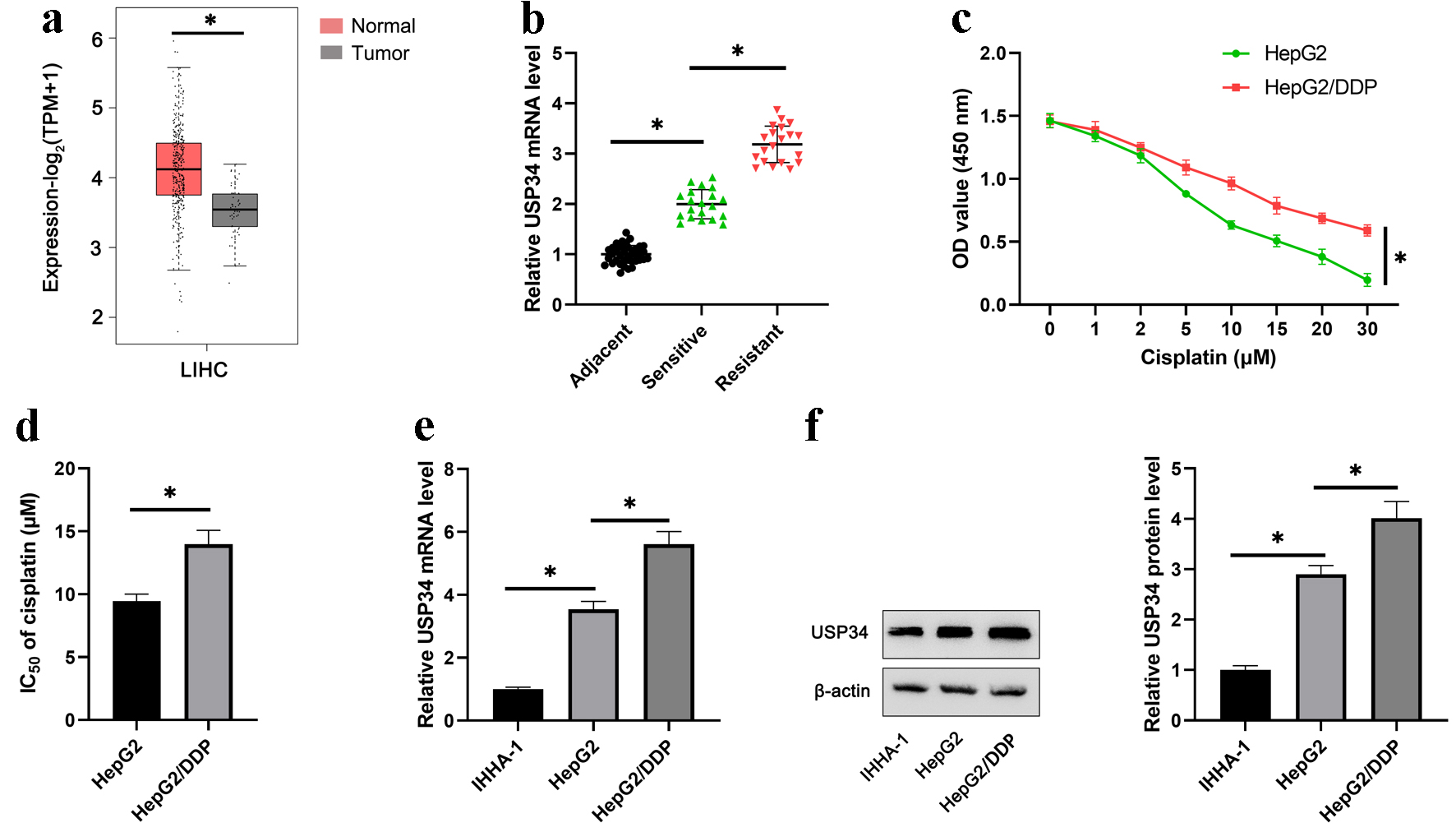
Figure 1. USP34 is significantly upregulated in cisplatin-resistant HCC tissues and cells. (a) The expression of USP34 in HCC and normal liver tissue using TCGA data from GEPIA2. (b) The expression of USP34 in tumor tissues of cisplatin-resistant patients and cisplatin-sensitive patients. (c) HepG2 and HepG2/DDP cells were treated with different concentrations (1, 2, 5, 10, 15, 20, 30 µM) of cisplatin for 48 h, and OD values were measured after 36 h. (d) The IC50 of HepG2 and HepG2/DDP cells. (e) The mRNA expression of USP34 in IHHA-1, HepG2 and HepG2/DDP cells. (f) The protein expression of USP34 in IHHA-1, HepG2 and HepG2/DDP cells. *P < 0.05. GEPIA2: Gene Expression Profiling Interactive Analysis; HCC: hepatocellular carcinoma; IC50: half-maximal inhibitory concentration; OD: optical density; TCGA: The Cancer Genomic Atlas; USP34: ubiquitin-specific protease 34.
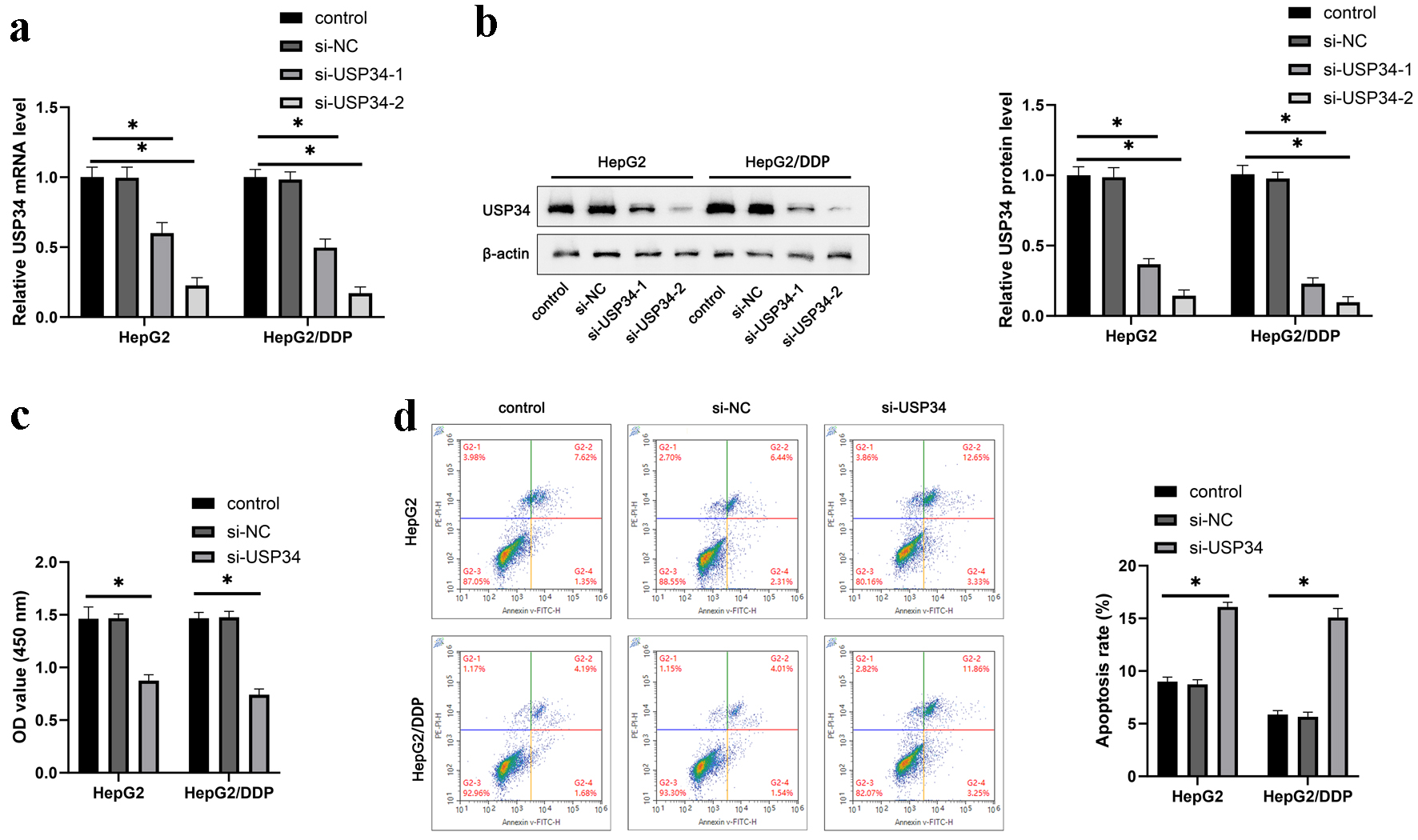
Figure 2. Knockdown of USP34 inhibits HepG2 and HepG2/DDP cell proliferation and survival. Constructing siRNA of USP34 (si-USP34-1, si-USP34-2) for transfection into HepG2 and HepG2/DDP cells. (a) The mRNA expression of USP34 in HepG2 and HepG2/DDP cells. (b) The protein expression of USP34 in HepG2 and HepG2/DDP cells. (c) The cell viability of HepG2 and HepG2/DDP cells. (d) The cell apoptosis of HepG2 and HepG2/DDP cells. *P < 0.05. USP34: ubiquitin-specific protease 34.
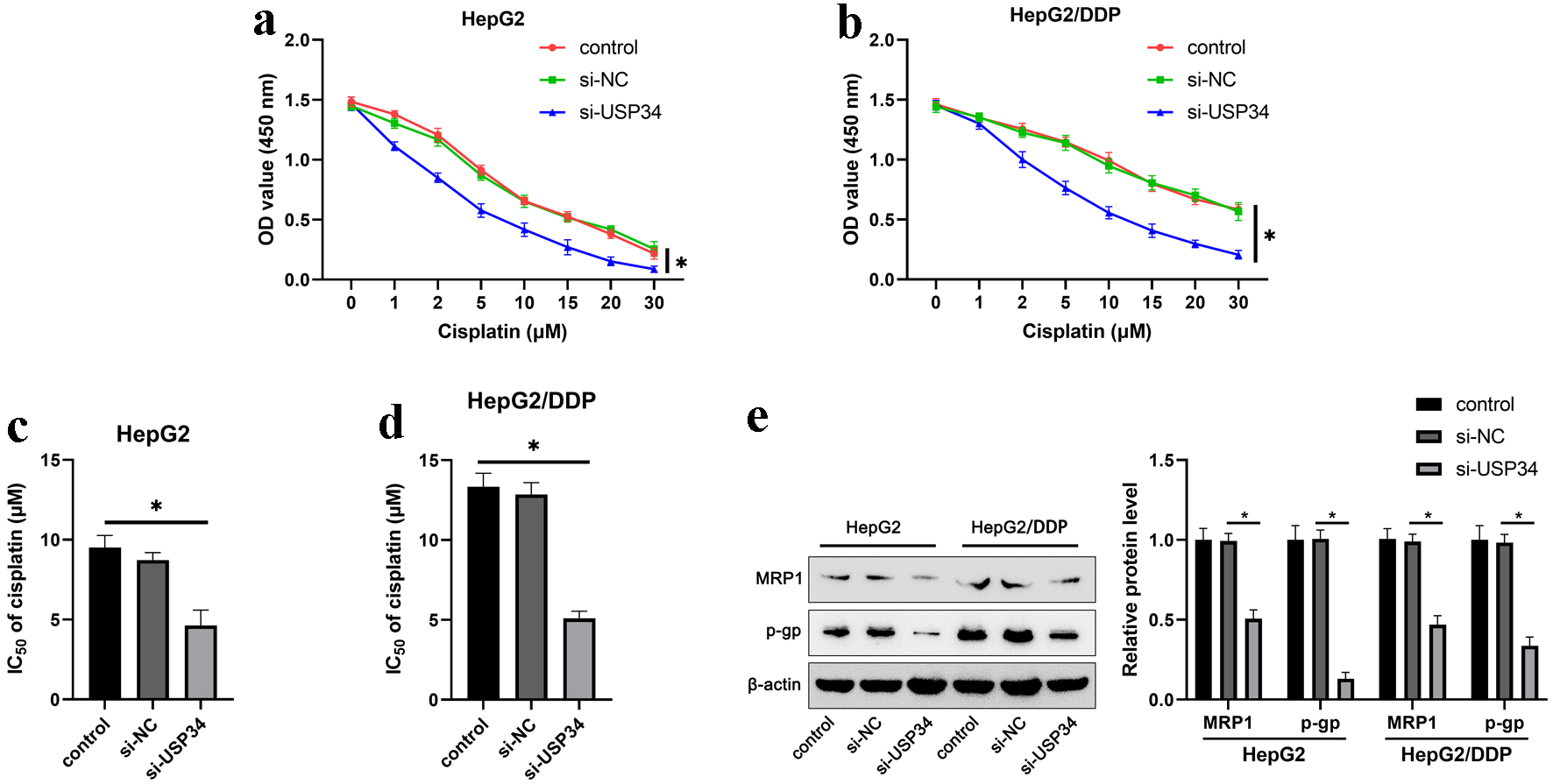
Figure 3. Knockdown of USP34 enhances cisplatin sensitivity in HepG2 and HepG2/DDP cells. HepG2 and HepG2/DDP cells were transfected with si-USP34 and treated with different concentrations (1, 2, 5, 10, 15, 20, 30 µM) of cisplatin. (a) The cell viability of HepG2. (b) The cell viability of HepG2/DDP cells. (c) The IC50 of HepG2 cells. (d) The IC50 of HepG2/DDP cells. (e) The protein expression of MRP1 and p-gp in HepG2 and HepG2/DDP cells. *P < 0.05. IC50: half-maximal inhibitory concentration; MRP1: multidrug resistance-associated protein 1; p-gp: p-glycoprotein; USP34: ubiquitin-specific protease 34.
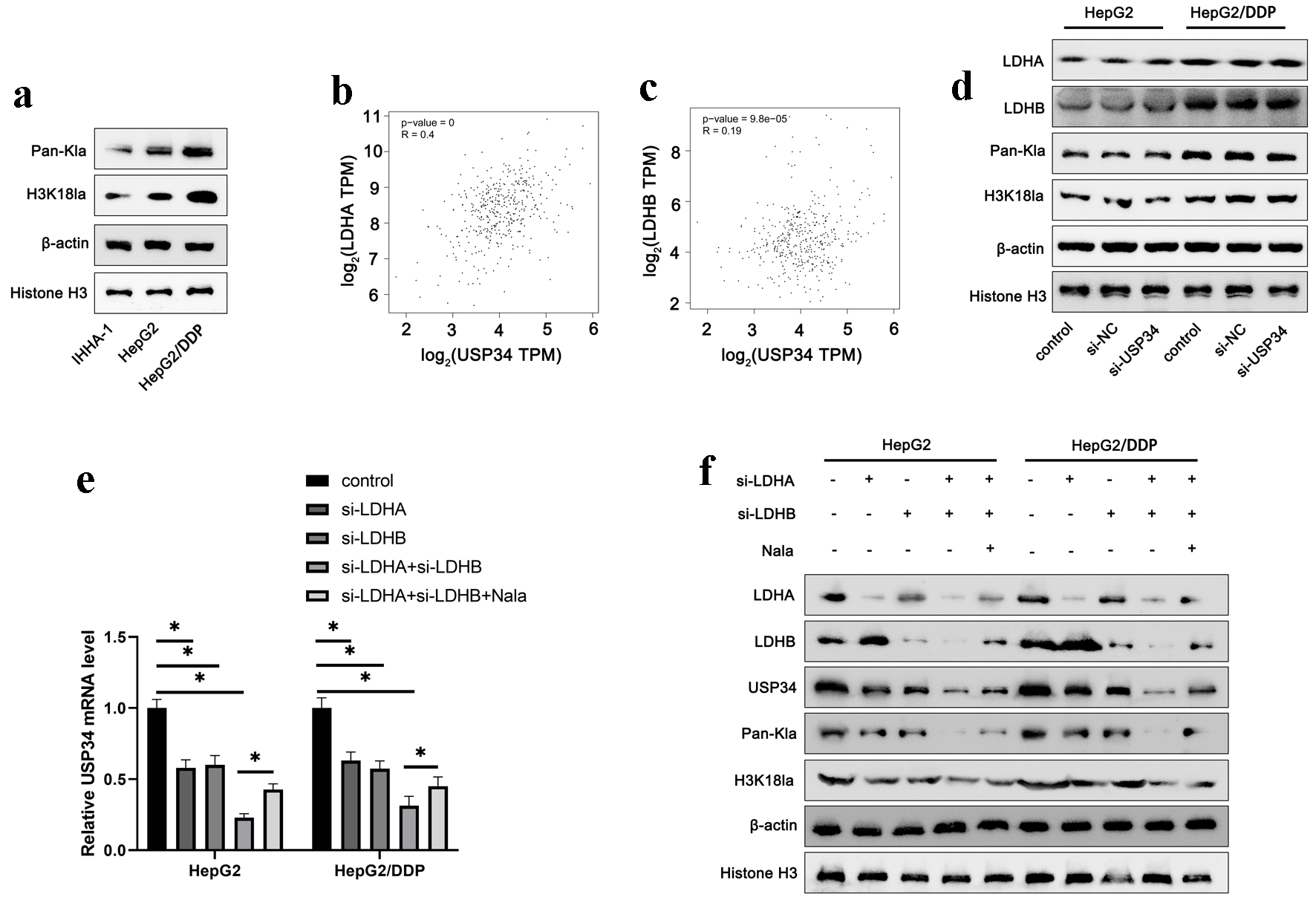
Figure 4. Upregulation of USP34 is associated with histone lactylation. (a) The protein expression of Pan-Kla and H3K18la in IHHA-1, HepG2 and HepG2/DDP cells. (b, c) The correlation between USP34 and LDHA and LDHB expression was analyzed using TCGA data from GEPIA2. Constructing siRNA of USP34 (si-USP34) for transfection into HepG2 and HepG2/DDP cells. (d) The levels of LDHA, LDHB, Pan-Kla and H3K18la in HepG2/DDP cells. HepG2 and HepG2/DDP cells were transfected with LDHA or LDHB siRNA (si-LDHA or si-LDHB) and then treated with sodium lactate (Nala). (e) The mRNA expression of USP34 in HepG2/DDP cells. (f) The levels of LDHA, LDHB, USP34, Pan-Kla and H3K18la in HepG2/DDP cells. *P < 0.05. GEPIA2: Gene Expression Profiling Interactive Analysis; H3K18la: histone H3 lysine 18 lactylation; LDHA: lactate dehydrogenase A; LDHB: lactate dehydrogenase B; Pan-Kla: pan-lysine lactylation; TCGA: The Cancer Genomic Atlas; USP34: ubiquitin-specific protease 34.
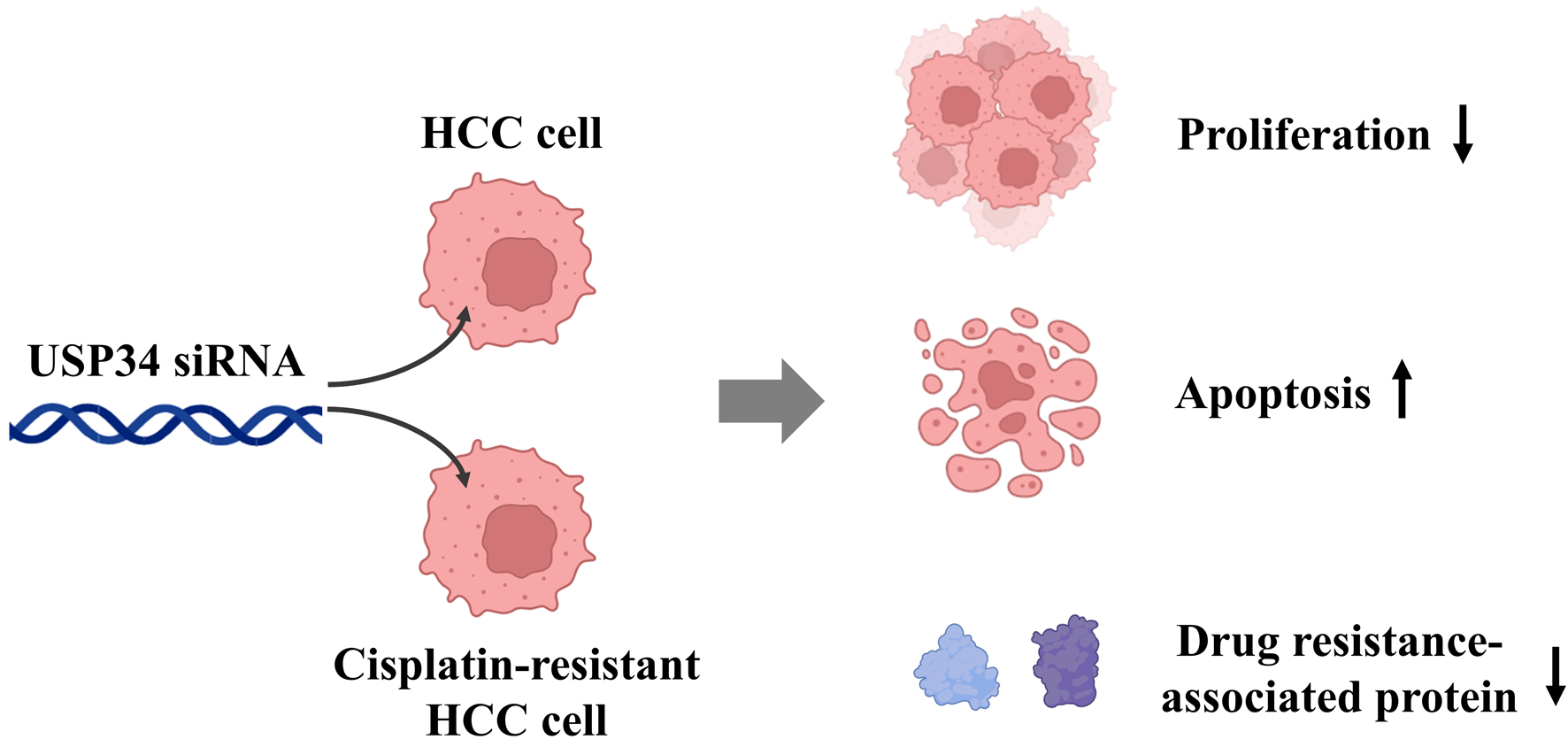
Figure 5. In HCC cells or cisplatin-resistant HCC cells, interference with USP34 inhibited cell proliferation, promoted cell apoptosis, and enhanced cisplatin sensitivity. HCC: hepatocellular carcinoma; USP34: ubiquitin-specific protease 34.




